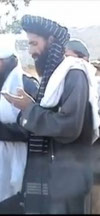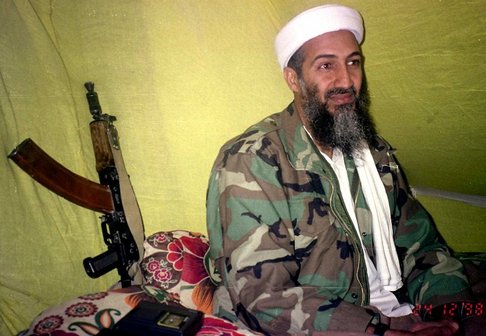 |
| Osama bin Laden in 1998. Click to view.
|
Today, in Washington, there is a debate over how to proceed with the war in Afghanistan. One school of thought that has reportedly gained prominence is based on the belief that America should focus its resources on counterterrorism efforts in Afghanistan, and especially Pakistan, instead of a counterinsurgency (COIN) campaign in Afghanistan. According to this line of thinking, the US should expand its campaign of airstrikes in northern and western Pakistan, while downgrading the contest for Afghanistan’s future.
This approach is driven in part by an assumption that al Qaeda is a narrow problem that can be neatly disentangled from all of the other geopolitical issues, including especially the rise of Islamic extremism, plaguing Central and South Asia. If we focus our efforts on Osama bin Laden and his not-so-merry band of men, proponents of this approach argue, then we can adequately protect America’s interests while avoiding getting further enmeshed in a potentially disastrous Afghan conflict. The Taliban and their fellow insurgents, then, the argument goes, are not our principal concern and we should not be overly concerned if they regain power in their one-time Islamic Emirate.
General Stanley McChrystal and other top military officials do not believe the strategy outlined above is adequate. The McChrystal plan for Afghanistan calls for America to wage a counterinsurgency campaign similar to that which evolved in Iraq. Underlying the McChrystal plan is the belief that if the US and its coalition partners prevent the Taliban and its allies from returning to power in Afghanistan, then this will necessarily weaken al Qaeda’s allies and, in turn, al Qaeda itself. In the military’s view, al Qaeda is not a standalone problem but instead one head of several on a jihadist hydra.
In the piece below, we take a look at the insurgency in Afghanistan more closely – from al Qaeda’s perspective. We do not think that a shift to a predominately counterterrorism campaign utilizing airstrikes and the like is sufficient to beat back the threat to America’s interests. In fact, we argue that such thinking is rooted in a dangerous ignorance of al Qaeda and our terrorist enemies. Al Qaeda was never a self-contained problem that could be defeated by neutralizing select individuals – even though capturing or killing senior al Qaeda members surely does substantially weaken the network.
Instead, Osama bin Laden and his cohorts deliberately fashioned their organization to be the tip of a much longer jihadist spear.
This was true during the years of the Soviet Jihad, when al Qaeda established a vast rolodex of like-minded jihadist leaders who, despite what were sometimes deep differences of opinion over tactical issues, could nonetheless be called upon as allies. It was true in the pre-9/11 world, from the early 1990s through September 10, when al Qaeda forged relationships with allied terrorist organizations first in the Sudan, al Qaeda’s base from roughly 1991 until 1996, and then in Afghanistan.
And it is true in the post-9/11 world, where al Qaeda continues to leverage its decades-long relationships with jihadist allies around the globe and especially in the heart of Central and South Asia.
Thus, we find that each of the three primary Afghan insurgent groups discussed in General McChrystal’s analysis – the Quetta Shura Taliban (QST), the Haqqani Network (HQN), and the Hezb-e Islami Gulbuddin (HIG) – is a core ally of al Qaeda with long-established personal ties between these groups’ senior leaders and al Qaeda’s senior leaders. Moreover, al Qaeda cooperates with each of these organizations in substantive ways in both Afghanistan and Pakistan.
If anything, General McChrystal’s analysis actually downplayed the interconnectivity between these organizations and al Qaeda.
Taking a broader view, General McChrystal’s team identified two foreign states that are especially problematic in Afghanistan: Pakistan and Iran. Al Qaeda’s relationships with these states, or core parts of them, give it strategic depth in the region.
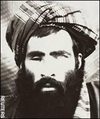 |
| Mullah Omar.
|
In Pakistan, the current civilian government has no interest in seeing al Qaeda live on. And General Musharraf’s regime provided vital assistance in tracking down senior al Qaeda members. But there is a hardened core within Pakistan’s military-intelligence establishment – in particular, the Inter-Services Intelligence (ISI) Agency - that is dedicated to jihad and sponsors al Qaeda’s allies, including each of the primary three insurgent groups in Afghanistan today. We should never forget that Mullah Omar, Jalaluddin Haqqani, and Gulbuddin Hekmatyar – the commanders of the Afghan insurgency – were all originally ISI proxies and, to some degree, remain so today. Parts of the ISI have also worked with al Qaeda proper for years as well.
Then, there is Iran, which has its own longstanding ties to al Qaeda’s senior leadership. In the pre-9/11 world, the Iranian regime cooperated with al Qaeda in a variety of ways. In the post-9/11 world, Iran has harbored senior al Qaeda terrorists and even armed and trained the Taliban – Iran’s one-time enemy.
What is the significance of all this? Simply put, a strategic defeat of the West in Afghanistan today is a victory for all of these forces. Even though they are not all equal partners in the Afghan insurgency, they all hold deeply anti-American, anti-Western views and are heavily invested in a Coalition defeat.
Should the insurgency permanently capture large swaths of Afghanistan, then these views will be vindicated. America will be seen as the “weak horse,” in Osama bin Laden’s words, once again. That al Qaeda is not the prime mover in the Afghan insurgency does not mean that its interests in the outcome are small. A victory for any of the three chief insurgency groups, or all of them together, including their sponsors, is a victory for al Qaeda and will surely strengthen its hand. And, contrary to widespread reporting, al Qaeda does play a noteworthy role in the Afghan insurgency.
The Quetta Shura Taliban (QST) and al Qaeda
The Taliban’s leadership, including Mullah Omar, consistently refused to turn over Osama bin Laden prior to the September 11 attacks. And after al Qaeda’s most devastating attacks, Mullah Omar again refused to answer calls for bin Laden to be turned over – even under the threat of war. The 9/11 Commission detailed the repeated efforts of both the Clinton and Bush administrations to get the Taliban’s leader to give up his most notorious friend. Those efforts failed – every time.
In all likelihood, this will never change. Mullah Omar simply will not abandon his longtime ally. Mullah Omar is the “Leader of the Faithful” and al Qaeda has sworn allegiance to his Emirate. Osama bin Laden himself has sworn his personal fealty to Mullah Omar. For Omar to betray bin Laden and al Qaeda now would be a colossal blemish on the Taliban’s legitimacy in the broader jihadist community’s eyes. Indeed, al Qaeda leaders have long recognized that Mullah Omar is firmly behind them.
Abdullah Sa'id, an al Qaeda commander who leads its “Shadow Army,” has openly mocked the idea that Mullah Omar would betray al Qaeda now. “US and Western sources talk about their readiness to accept the Taliban in the Afghan future political structure should it leave the Al Qaeda," he has said. But that is not reality, Sa'id explained:
“However, these sources close the eyes to the fact that Mullah Mohammad Omar has lost his [ruling] throne upon his refusal to hand over one person who is Osama bin Laden. Thus, will Mullah Mohammad Omar agree to a condition which he refused when he used to rule and when the United States was at the top of its might, and accept it now while he is on the threshold of a victory over his enemies?”
Sa'id’s calculation is plain. Mullah Omar would not agree to turn over bin Laden when he was faced with the prospect of imminent annihilation. Surely Omar will not part ways with the terror master now that his prospects for success are greater than they have been in years.
You have undoubtedly heard that Osama bin Laden was the Taliban’s “guest” in Afghanistan prior to September 11. That is a vast understatement. The reality is that bin Laden integrated al Qaeda’s operations with the Taliban’s in a variety of important ways. Al Qaeda and the Taliban have been fighting side-by-side for more than a decade. Long before September 11, al Qaeda successfully integrated itself into the Taliban’s infrastructure. Not only did bin Laden direct some of the financing from his Arab Gulf donors (who, by the way, would also rejoice should Afghanistan fall) into the Taliban’s pockets, providing them with much needed cash and supplies, but he also used that funding to improve Afghanistan’s infrastructure, including its roads.
That was not some benign gesture, however. Improvements to Afghanistan’s infrastructure meant improvements in al Qaeda’s and the Taliban’s ability to project power throughout war-torn Afghanistan by making it easier to move their jihadist forces to locations where they were needed. These improvements also made it easier for al Qaeda and the Taliban to deliver recruits from foreign lands, especially the heart of Arabia, to their jointly-run training camps.
Al Qaeda and the Taliban set up large-scale training facilities in pre-9/11 Afghanistan. One of the most important of these facilities was named al Farouq, where both Taliban and al Qaeda terrorists were trained, including some of the 9/11 hijackers. Recruits who were deemed suitable to fight on the frontlines were often sent to joint Taliban-al Qaeda brigades. One such brigade was called the Arab 055 Brigade, which was under the command of senior al Qaeda terrorist Abdul Hadi al Iraqi, who has been captured. Abdul Hadi, who is a former major in Saddam Hussein’s army, oversaw both al Qaeda and Taliban fighters during their war against first the Northern Alliance and later the American-led coalition in 2001. There are countless similar examples of such pre-9/11 cooperation from which to choose.
Although the Arab 055 Brigade was disbanded after the initial routing of Taliban and al Qaeda forces in late 2001,
it has since been reformed. It currently operates in southern and eastern Afghanistan and its members are often detached to Taliban units to serve as “embedded trainers,” just as US troops are tasked to train indigenous forces in Afghanistan. These trainers and commanders are
occasionally killed on the
battlefield.
As General McChrystal noted in his analysis of Afghanistan, the insurgency is primarily conducted by Afghans (that is, the Taliban and its “native” allies). However, al Qaeda does play a significant role.
In addition to conducting some joint operations with the Taliban, al Qaeda also acts as a force multiplier by delivering suicide bombers and other tactical assistance for some of the Taliban’s most significant operations.
Al Qaeda's paramilitary “Shadow Army” also operates freely along the Afghan-Pakistani border. The reconstituted Arab 055 Brigade is just one of six formations in al Qaeda's army. This unit, organized along military lines, detaches smaller sub-units to conduct operations alongside the Taliban in both countries. Taliban leaders, in turn, provide the unit with recruits and host training camps.
On occasion, Taliban commanders have been blunt about their cooperation with al Qaeda, as well as their common ideology and goals. For example, as Taliban commander Mullah Dadullah explained in 2006:
“We like the Al-Qaeda organization. We consider it a friendly and brotherly organization, which shares our ideology and concepts. We have close ties and constant contacts with it. Yes, when we need them, we ask for their help. For example, the bombings the operations we carry out – we learned it from them. We learn other types of operations from them as well. We cooperate and help each other. Operations are carried out throughout Afghanistan but the reason they escalated in three or four states is that commanders like myself are here. In other regions there are fewer commanders. One of our plans is to escalate operations there as well.”
The bottom line is that al Qaeda and the Taliban fight side-by-side today, just as they have for more than a decade.
It is remarkable that anyone would argue that a Taliban safe haven in Afghanistan would not necessarily lead to an al Qaeda safe haven there given that the two currently enjoy the same safe havens in Northern Pakistan. After the two jointly established
the Islamic Emirate of Waziristan in 2006, for example, it should have become painfully obvious that they had not given up on their combined territorial ambitions.
Just as in pre-9/11 Afghanistan, these safe havens are home to broad cooperation between the Taliban and al Qaeda. The Taliban hosts camps for al Qaeda's paramilitary army, as well as al Qaeda’s external network – that is, those terrorists responsible for striking the West. By some estimates there are more than 150 training camps, of various sizes and configurations, in the tribal areas in Northwestern Pakistan.
Senior al Qaeda leaders are routinely killed at Taliban safe houses, training camps, and compounds during US airstrikes. Numerous Taliban leaders, including the Haqqanis (a father and son team who are based both in eastern Afghanistan and in Pakistan's tribal areas, as discussed below), Hakeemullah Mehsud, Mullah Nazir, Hafiz Gul Bahadar, Omar Khalid, Mullah Fazlullah, and Faqir Mohammed host al Qaeda's leaders and foot soldiers. These Taliban commanders conduct cross-border operations in Afghanistan, and aid al Qaeda in doing so as well.
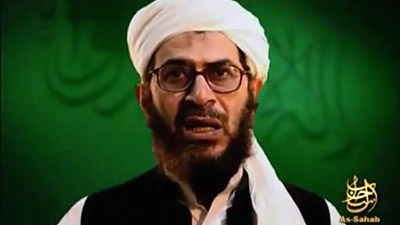 |
| Mustafa Abu Yazid on As Sahab, al Qaeda's propaganda arm. Obtained by The Long War Journal from an al Qaeda propaganda tape.
|
Al Qaeda’s loyalty to these Taliban commanders, and gratitude for their enduring support even in the face of international opposition (e.g., Predator strikes), is transparent. For example, al Qaeda’s top terrorist in Afghanistan, Mustafa Abu Yazid, recently released
a taped eulogy to commemorate fallen Pakistani Taliban commander Baitullah Mehsud. Yazid explained:
"Amir Baitullah (may God have mercy on him) was a generous, strong, courageous, and noble person when it came to making decisions, especially the decision to host, aid, and shelter his migrating mujahidin brothers. It was he and the sons of his tribe (the generous heroes) who did that. Despite all the attacks, destruction, and killings by the hands of the apostate Pakistani Army in the Wazir tribe in the Wana and Shikay areas, who were first to host their migrating and mujahidin brothers (may God reward them), he did not stop hosting, aiding, and sheltering his migrating brothers."
In other words, despite having significant incentives to betray his al Qaeda brethren, Baitullah Mehsud never did so.
And the Taliban’s other senior leaders won’t either.
Al Qaeda and the Taliban share the same immediate goal with respect to Afghanistan – expelling Western forces so they can acquire more geographical territory. If this is accomplished, they will undoubtedly rebuild their fallen Islamic Emirate. In fact, the Taliban has already
established a “shadow government” for the explicit purpose of having the infrastructure in place to run Afghanistan should they establish permanent control of territory.
Al Qaeda is slated to play a significant role in the Taliban’s resurrected Caliphate.
Incredibly, they have already jointly set up a new central bank. During one session of the Taliban’s and al Qaeda’s shura majlis (executive council) in northern Pakistan, the terror masters established the Bayt al Mahl, or “House of Wealth.” This bank was set up in a region called Jani Khel, within the Northern Pakistani district of Bannu. The Bayt al Mahl, according to a former senior US intelligence official, is the official treasury of the Caliphate. As the Leader of the Faithful, Mullah Omar is entitled to 20 percent of the wealth. Osama bin Laden is authorized to approve withdrawals, and has Mustafa Abu Yazid, al Qaeda's emir in Afghanistan, complete the transactions.
It says much about al Qaeda’s and the Taliban’s joint territorial aspirations that the two have already a central bank to fund their venture. The idea that al Qaeda can be treated as a separate enemy that can be carved off the insurgency is therefore a fallacy.
The Haqqani Network and al Qaeda
The Haqqani Network, a Taliban group in eastern Afghanistan,
operates closely with al Qaeda. Jalaluddin Haqqani, a former senior Taliban government official and troop commander, has been an ally of Osama bin Laden since the Soviet Jihad. As Ahmed Rashid writes in Descent Into Chaos, Haqqani is a “firm believer in al Qaeda.” Together with his son, Siraj, the Haqqani network recruits foreign fighters and trains them to be suicide bombers – an effort that is undoubtedly aided by al Qaeda. After 9/11, the Haqqanis were instrumental in shuttling al Qaeda terrorists and Taliban members out of Afghanistan into their new refuge in Northern Pakistan.
Leaders within the Haqqani Network are not bashful about their close relations with al Qaeda. In fact, they trumpet the relationship. In
a recent interview, for example, Mullah Sangeen Zadran, a senior commander in the Haqqani Network, explains that the Taliban and al Qaeda work together nearly seamlessly toward the same goals - defeating the US and her allies and re-installing the Mullah Omar-led Taliban government. Here is how Mullah Sangeen Zadran describes this cooperation:
"All praise is for Allah, Al-Qaeda and Taliban all are Muslims and we are united by the brotherhood of Islam. We do not see any difference between Taliban and Al- Qaeda, for we all belong to the religion of Islam. Sheikh Usama has pledged allegiance to Amir Al-Mumineen (Mulla Muhammad Umar) and has reassured his leadership again and again. There is no difference between us, for we are united by Islam and the Sharia governs us."
Thus, just as with what General McChrystal calls the Quetta Shura Taliban (QST), the Haqqani Network (HN) – which is, in reality, another Taliban branch - is also closely allied with al Qaeda. Recent accounts have suggested that the Haqqanis and Mullah Omar may have disagreements over the future of the Taliban movement and just who will ascend to the throne of their resurrected Islamic Emirate.
But this rivalry for power does not mean that they are not in the same trench when it comes to ejecting Western forces from the region. Such rivalries have been common for decades. More importantly, both Mullah Omar and the Haqqanis remain key al Qaeda allies.
The HIG and al Qaeda
The Hezb-e Islami Gulbuddin has been closely allied with Osama bin Laden and al Qaeda for decades. The HIG’s leader, Gulbuddin Hekmatyar, has been bin Laden’s friend and ally since the Soviet Jihad – just like Jalaluddin Haqqani. When bin Laden was forced to leave Sudan in the mid-1990s, Hekmatyar offered to take him and al Qaeda in. The war for Afghanistan did not go Hekmatyar’s way, however. The HIG lost the contest for power to the Taliban. Hekmatyar moved to Iran as a result, only to be “asked to leave” at some point after the September 11 attacks.
Even though the HIG and the Taliban were rivals for power in the mid-1990s, the two have had no trouble cooperating in attacks against American forces in Afghanistan today. Having a common ally in al Qaeda has surely made this cooperation easier. According to US intelligence authorities, cooperation between the HIG, the Taliban, and al Qaeda dates to at least 2003 if not earlier. For example,
an evidentiary memo produced at Guantanamo reads: “In the spring of 2003, Taliban supreme leader Mullah Mohammad Omar, Hizb-e-Islami Gulbuddin leader Gubuddin Hekmatyar, and Osama bin Laden agreed to unite their forces.”
Pakistani intelligence, extremism, and al Qaeda
Pakistan is home to an alphabet soup of extremist and terrorist organizations that broadly share al Qaeda’s ideology. Since the days of the Soviet Jihad, al Qaeda’s top leaders have consorted and collaborated with the heads of these organizations. The best-known example is Lashkar e Taiba (LeT), which despite being formally banned by the Pakistani government has continued to operate under a new name. Osama bin Laden himself reportedly played a role in the LeT’s founding, and al Qaeda has routinely shared training camps and guest houses with the LeT.
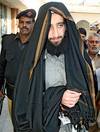 |
| Rashid Rauf. Click to view.
|
Another example is Jaish e Mohammed (JeM). JeM has also developed international aspirations.
Large numbers of JeM forces have relocated to the Taliban’s and al Qaeda’s safe haven in Northern Pakistan, where they have merged forces. The most notorious of these JeM terrorists is Rashid Rauf, who became one of al Qaeda’s chief planners for external operations – that is, attacks against the West. Rauf was reportedly instrumental in planning the July 7, 2005, bombings in London, a follow-on plot that was foiled a few weeks later, and the Heathrow airliners plot, which was broken up in the summer of 2006. Rauf has reported directly to al Qaeda’s external operations chief.
Al Qaeda’s relationship with JeM and Rashid Rauf, who is a relative of JeM’s founder, demonstrates just how deep al Qaeda’s bench is. Rauf and his ilk have replaced senior al Qaeda leaders who have been captured or killed. It is telling that al Qaeda has been able to turn to Pakistani groups to regenerate the tip of the spear.
Both the LeT and JeM are long-time ISI proxies. Both, in fact, are Pakistani proxies built to confront Indian forces in Jammu and Kashmir. Here, we encounter a core reality about Pakistan. Undoubtedly, America has received vital assistance from Pakistan’s government in the post-9/11 world. Numerous high-level al Qaeda terrorists, such as Abu Zubaydah, Khalid Sheikh Mohammed, and Ramzi Binalshibh, have been captured with Pakistani assistance. And parts of the Pakistani military fight Taliban forces today.
But Pakistan’s government is both divided and duplicitous.
In particular, key figures within Pakistan’s military-intelligence establishment have continued to play a double-game.
The name “Quetta Shura Taliban” should tell you all that you need to know about the Pakistani military-intelligence establishment’s loyalties. The Taliban would not be able to prosper in Quetta, Pakistan, if it were not for the intelligence service’s hospitality.
The Taliban and its allies continue to receive assistance from Pakistan’s military-intelligence complex. Some in the West say this assistance is attributable to the Pakistani military’s desire to keep them alive to fight proxy wars against Pakistan’s enemies (India) in the various conflicts throughout Central and South Asia. There is undoubtedly much truth in this. This is probably an apt explanation for why military leaders like General Musharraf, who is no jihadist, supported the Taliban in the first place.
However, Pakistan’s military-intelligence establishment has a disturbingly large number of “true believers” in its ranks as well. The origins of their influence date back to General Zia ul Haq’s years as president. Haq – a dedicated Islamist who wanted to mold Pakistan in a truly radical fashion – set a precedent for Pakistan’s uniformed servicemen.
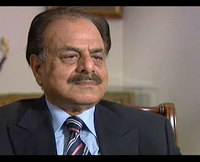 |
| Former ISI chief Hamid Gul.
|
As a result of Haq’s policies,
Islamists infiltrated the Pakistani military-intelligence establishment’s ranks repeatedly, and still other existing servicemen have adopted their radical views. One prominent example is Hamid Gul, the former chief of the ISI, who still has significant power within Pakistan. Gul and his compatriots are not just cunning tacticians when it comes to Pakistan’s jihadist proxies. They long ago committed themselves to the most radical brand of Islam and believe that Pakistan should wage jihad against her enemies to expand her power.
The bottom line with respect to Pakistan is this: Should the Taliban and its allies – all of which were originally ISI proxies – gain power in Afghanistan, then it will be a major victory for the Pakistani military-intelligence establishment’s long-term sponsorship of these groups. If you think earning Pakistan’s cooperation against these groups and al Qaeda is difficult now, imagine what would happen if they are triumphant in Afghanistan once again. It would totally justify the Pakistani decision to continue sponsoring these groups despite receiving billions of dollars in aid from the US and being America’s nominal ally.
The Iranian regime, al Qaeda and the Taliban
Despite the widely held belief that
Shiite Iran cannot cooperate with
Sunni al Qaeda because of theological differences,
the two have found common cause against their mutual enemies since the early 1990s. This cooperation has been documented by the 9/11 Commission, the Clinton administration’s Justice Department, the US Treasury Department, the testimony of al Qaeda terrorists themselves, US intelligence officials, foreign governments and intelligence services, eyewitnesses, and a variety of other sources.
The record of cooperation both prior to and after September 11 is extensive.
 |
| Sa'ad bin Laden.
|
After September 11, the Iranian regime did turn over a relatively small number of low-level Sunni jihadists, including some al Qaeda members. But, like a corrupt cop working for the mob, the Iranians protected the big fish. Iran gave safe haven to senior al Qaeda terrorists. Thus, Osama bin Laden’s son and possible heir, Saad bin Laden, as well as other key al Qaeda terrorists including Abu Ghaith (Osama bin Laden’s spokesman), Saif al Adel (a top al Qaeda military planner wanted for his role in the August 1998 embassy bombings), Abdel al Aziz al Masri (who Khalid Sheikh Mohammed told authorities was al Qaeda’s nuclear weapons chief), Abu Musab al Zarqawi (the fallen leader of al Qaeda in Iraq), and Mustafa Setmariam Nasar (aka Abu Musab al Suri, an al Qaeda strategist who also reportedly played a role in al Qaeda’s international attacks, who has been captured) all received refuge in Iran at one point or another. The Iranian Revolutionary Guard Corps (IRGC) has hosted all of these al Qaeda terrorists, and more.
Al Qaeda was relatively free to move about Iranian soil prior to the May 2003 bombings in Riyadh. The Saudi Kingdom and the US then reportedly complained to the Iranians about the al Qaeda presence after intelligence officials traced the attack’s planners to Iran. At that point, the Iranians placed a number of high-level al Qaeda terrorists under some form of loose “house arrest.” This detention is hardly cumbersome, however, as al Qaeda has continued to hold high-level planning meetings. Saad bin Laden was also able to leave Iran and rejoin his father in Northern Pakistan late last year – a move that would not have been possible had he been under some form of strict detention.
The Iranians have been coy about their guests. According to former Bush administration officials and the State Department, the Iranians played dumb when asked about the al Qaeda terrorists living inside their country. As the State Department reported in its
2008 Country Reports on Terrorism:
Iran remained unwilling to bring to justice senior al Qaeda members it has detained, and has refused to publicly identify those senior members in its custody. Iran has repeatedly resisted numerous calls to transfer custody of its al Qaeda detainees to their countries of origin or third countries for trial. Iran also continued to fail to control the activities of some al Qaeda members who fled to Iran following the fall of the Taliban regime in Afghanistan.
The Iranians’ unwillingness to turn over senior al Qaeda members led to
their designation by the US Treasury Department earlier this year. The Treasury Department’s designation makes it clear that the
Iranians and al Qaeda have been working together for a long time.
Al Qaeda operatives inside Iran have been tied to acts of terrorism inside other Gulf nations. For example, the Saudis continually complain about al Qaeda plotting and assisting acts of terrorism inside their Kingdom from Iranian soil. Such claims cannot be summarily dismissed as a byproduct of the Saudi-Iranian rivalry.
The Saudis have named names, pointing the finger at Saudi citizens living inside Iran. This includes dozens of terrorists on the Kingdom’s 85 Most Wanted List who were “rehabilitated” in the Saudis’ reeducation program. The fact that Saudis have been reticent in the past to blame the Kingdom’s own citizens for terrorism and have defended their rehabilitation program against public criticism makes such disclosures highly significant.
 |
| Ayman al Zawahiri.
|
There are other examples as well. Kurdish authorities inside Iraq have repeatedly complained about Iran’s role in sponsoring and sheltering al Qaeda-affiliated terrorists. And al Qaeda terrorists operating inside Iran have been
tied to al Qaeda cells in Bahrain and other Middle Eastern nations. (It should be noted that this pattern of complicity has taken place despite public criticisms of Iran by al Qaeda number two Ayman al Zawahiri. Some may read Zawahiri’s comments as proof that Iran and al Qaeda cannot cooperate. But that is not an accurate assessment. After all, according to the Treasury Department, Zawahiri himself sent his beloved daughters to Iran for protection after September 11.)
Iran cooperates not only with al Qaeda, but also the Taliban. US military and intelligence officials have
repeatedly accused the Iranian regime of training and arming the Taliban. This cooperation was actually set up in
clandestine meetings long ago. And
recent reports note that this cooperation is only getting more pronounced.
Iran’s interests in Afghanistan are not fully appreciated. As long as Western forces are stationed there, Iran will undoubtedly take advantage of the opportunity to kill Americans. And, Iran has no problem sponsoring Sunni terrorist organizations as long as they oppose the real “Satan”: America.
Conclusion
In conclusion, the war in Afghanistan is part of a multi-dimensional contest for power between, on the one hand, al Qaeda and its allies and, on the other, America and her allies.
The idea that al Qaeda is a discrete organization that can be neatly separated from the Afghan insurgency is a fantasy. All three of the major branches of the insurgency, as well as their sponsors, are closely allied with al Qaeda and have been for years.
Air strikes using drones are a valuable tool for disrupting al Qaeda’s external network, thereby hampering the terror network’s capacity to strike the West.
But such strikes are a tactic, not a strategy. And,
it should be noted, these strikes have frequently killed senior Taliban commanders as well. This only emphasizes the degree of cooperation between the Taliban and al Qaeda.
A more robust game plan for Afghanistan, and the region, is required. We understand that there is no immediate discussion of entirely drawing down America’s or NATO’s forces. But a more comprehensive commitment than that which is presently being employed is needed.
Should the insurgents conquer Afghanistan once again, there is no doubt that al Qaeda would return to its former safe haven. But that is, in some ways, the least of our concerns. Their return to power would be a victory for all of those forces that spawned al Qaeda in the first place.








